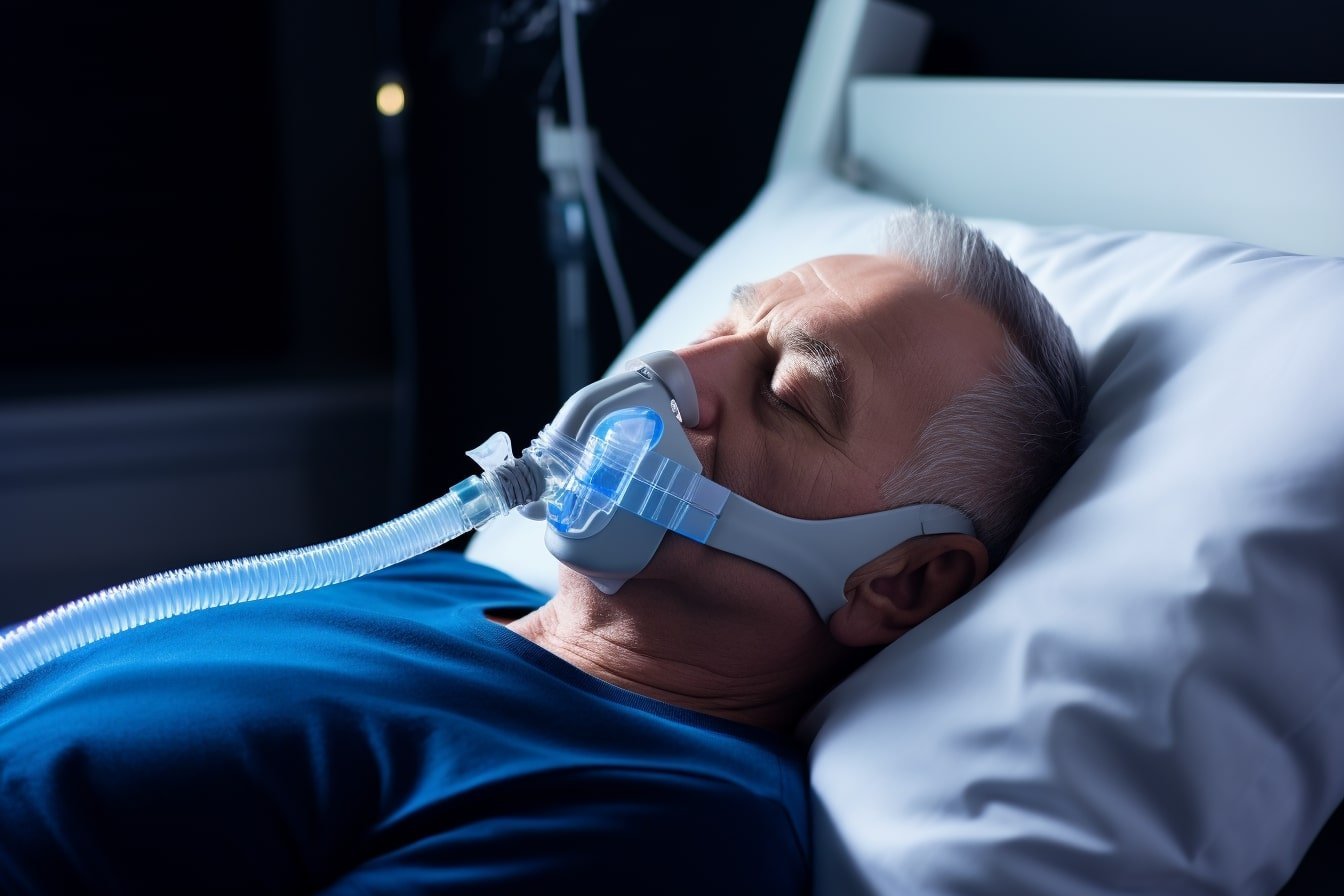Summary: Continuous Positive Airway Pressure (CPAP) treatment for Obstructive Sleep Apnea (OSA) can reduce the accelerated telomere shortening brought on by the condition.
Telomeres, the protective ends of chromosomes, play a role in aging and tend to shorten faster with OSA. This study reveals that not only does CPAP combat OSA symptoms, but it also attenuates the rapid aging effects. The findings highlight the crucial link between sleep quality and aging.
Key Facts:
- Continuous Positive Airway Pressure (CPAP) can mitigate the accelerated telomere shortening seen in Obstructive Sleep Apnea (OSA) patients.
- The study at UNIFESP involved 46 male patients aged 50-60 and diagnosed with moderate to severe OSA, revealing that CPAP also reduces inflammation.
- OSA’s effects are so profound that having severe OSA was found to be equivalent to aging an additional ten years.
Source: FAPESP
Obstructive sleep apnea (OSA) consists of multiple episodes of partial or complete closure of the upper airway that occur during sleep, leading to breathing cessation lasting more than ten seconds and sometimes even several minutes, followed by arousals and deep breathing.
Symptoms include lack of concentration, fatigue and excessive daytime sleepiness, all of which lower the quality of life and can be incapacitating. Untreated patients are at risk for hypertension, cardiovascular disease, heart failure and diabetes, among other health problems, as well as poor memory and concentration.

A study conducted at the Federal University of São Paulo (UNIFESP) in Brazil shows that the telomere shortening that naturally occurs with aging and is accelerated by OSA can be mitigated by the use of continuous positive airway pressure (CPAP), a method of respiratory therapy in which air is pumped into the lungs through the nose and mouth during spontaneous breathing.
Telomeres are structures made from DNA sequences and proteins found at the ends of chromosomes. They play a central role in maintaining the integrity of the genetic material in cell nuclei. They naturally shorten as cells divide to regenerate tissue and organs, and aging cells stop dividing when telomeres become too short. Accelerated telomere shortening due to OSA can therefore lead to premature cell aging.
The study was supported by FAPESP and reported in an article published in the journal Sleep.
The researchers assessed 46 male patients aged 50-60 and diagnosed with moderate or severe OSA for six months. They divided these volunteers into two groups, treating one with CPAP and the other with placebo (a CPAP machine with a hidden leak in the exhaust port of the mask to disperse the therapeutic pressure).
In monthly visits, they checked adherence to CPAP, considered complex and hard to get used to. They took blood samples to measure telomere length at the start of the trial, three months later and at the end of the intervention. They also analyzed inflammatory and oxidative stress markers.
“Telomere shortening is inevitable because it’s associated with aging, inflammation and oxidative stress, but OSA accelerates it and we found that CPAP attenuated this acceleration after three and six months,” said Priscila Farias Tempaku, first author of the article and a researcher in sleep biology at UNIFESP’s Department of Psychobiology.
In their investigation of the molecular mechanisms associated with OSA and telomere shortening, the researchers observed that inflammation is probably the main pathway via tumor necrosis factor alpha (TNF-α), a cytokine known to be involved in the pathogenesis of some inflammatory and autoimmune diseases.
“In the placebo group, TNF-α influenced telomere length, whereas the association wasn’t observed in the CPAP group. This shows that in addition to its already recognized importance in mitigating cardiovascular and metabolic risk, CPAP also reduces inflammation and therefore attenuates telomere shortening,” Tempaku explained.
“The results underscore the criticality of sleep as a protective factor in aging and a risk factor in patients with alterations. This is an excellent incentive since most people are reluctant to use CPAP,” said Sergio Tufik, last author of the article and head of UNIFESP’s Sleep Institute.
Sleep epidemiology
A pioneer of sleep research in Brazil and worldwide, Professor Tufik created the Episono (“Episleep”) project to investigate sleep epidemiology. He and his team have conducted surveys of the population of São Paulo city every decade since 1986 to find out about their sleep-related health problems, including insomnia, snoring and sleepwalking, and have published more than 70 articles on the subject in scientific journals.
The 2015 round of the survey focused on the effects of telomere shortening over a period of ten years, showing that having severe OSA was equivalent to aging ten years. This finding, alongside those of the latest study, led the researchers to conclude that they should investigate the links between sleep and aging in more depth.
“People age faster when they sleep badly. Poor quality sleep is associated with mortality as much as other diseases. Around 30% of the population have OSA, but there’s no care for the disorder. CPAP isn’t provided by public or private health services, and this has to change,” Tufik said.
The prevalence of OSA is rising in parallel with the advance of obesity, as the two disorders are frequently associated. According to the Brazilian Bariatric and Metabolic Surgery Society (SBCBM), 70% of obese people suffer from sleep disorders. The proportion is 80% in the case of morbid obesity.
Diagnosis of OSA requires a polysomnography test, also known as a sleep study. Treatment involves CPAP and lifestyle changes such as weight loss, and avoidance of sleep medication as well as alcoholic beverages at night.
About this brain aging and sleep apnea research news
Author: Heloisa Reinert
Source: FAPESP
Contact: Heloisa Reinert – FAPESP
Image: The image is credited to Neuroscience News
Original Research: Open access.
“Effect of Obstructive Sleep Apnea and CPAP on Telomere Length and its Associated Mechanisms” by Priscila Farias Tempaku et al. SLEEP
Abstract
Effect of Obstructive Sleep Apnea and CPAP on Telomere Length and its Associated Mechanisms
Introduction
Growing evidence suggests the contribution of obstructive sleep apnea (OSA) in the molecular pathways of aging related to the maintenance of telomere length. The present study aimed to investigate the effect of OSA and its treatment with continuous positive airway pressure (CPAP) on the variation of telomere length and its associated mechanisms.
Methods
For this, a 6-month randomized, double-blind and sham-controlled clinical trial was conducted. Participants were randomized to CPAP or sham-CPAP and attended 7 visits, in which they underwent clinical assessment and had their blood collected to determine mean leukocyte telomere length (LTL) and the dosage of metabolic and inflammatory markers.
Results
Among 127 individuals that we contacted, 46 met the inclusion criteria. At baseline, individuals in both groups were homogeneous, including LTL (p=0.106). Adherence during the intervention was 5.29 ± 1.09 in the sham-CPAP group and 5.71 ± 0.19 in the CPAP group. After 6 months of intervention, we observed a statistically significant effect of the treatment (p=0.001) on LTL, in which the sham-CPAP group (1.0117 ± 0.1552, 0.9457 ± 0.0747, 0.8482 ± 0.2163) showed a more significant reduction than the CPAP group (1.0960 ± 0.1122, 1.0521 ± 0.1094, 1.0675 ± 0.1225). Furthermore, we found a negative correlation between delta LTL and dela TNF-α at Visit 7 and Visit 1 (rho=-0.216, p=0.003) due to the sham-CPAP intervention (rho=-0.383, p=0.009) in relation to the use of CPAP (rho=0.021, p=0.800).
Conclusion
We can conclude that CPAP, when compared to sham-CPAP placebo, caused an effect on LTL stability, potentially by the modulation of TNF-α.
Support (if any)
Our studies are supported by Associação Fundo de Incentivo à Pesquisa (AFIP), Fundação de Amparo à Pesquisa de São Paulo (FAPESP), Coordenação de Aperfeiçoamento de Pessoal de Nível Superior (CAPES) and Conselho Nacional de Desenvolvimento Científico Tecnológico (V.A. and S.T. received CNPq fellowships).






